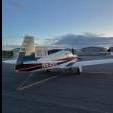Is my Mooney slow?
-
Members Online
- redbaron1982
- EricJ
- Schllc
- hammdo
- Slick Nick
- MikeOH
- exM20K
- Aerodon
- 231DF
- bigmo
- UteM20F
- irishpilot
- ProtoFly
- TheAv8r
- Andy95W
- dzeleski
- hypertech
- PT20J
- Skyland
- Scottknoll
- Kelpro999
- Rmfriday
- larryb
- IgorD
- Mooney-Shiner
- AndrewDash3973
- tankles
- Parker_Woodruff
- jetdriven
- mgan
- Pembroke Advisor
- JimMardis
- rahill
- BadMooneyRising
- 211º
- AH64Bennett
- FloridaMan
- Fasterthanmycherokee
- TangoTango
- eman1200
- CCAS
- N177MC
- AviH
- 1967 427
- Freight Dog
- MattCW
- Ryan ORL
- 1980Mooney


Recommended Posts
Join the conversation
You can post now and register later. If you have an account, sign in now to post with your account.